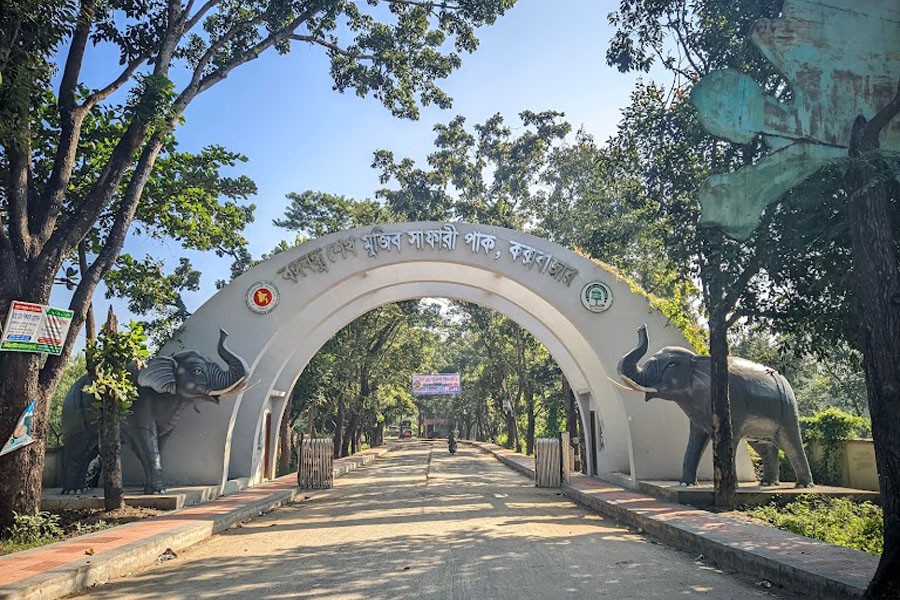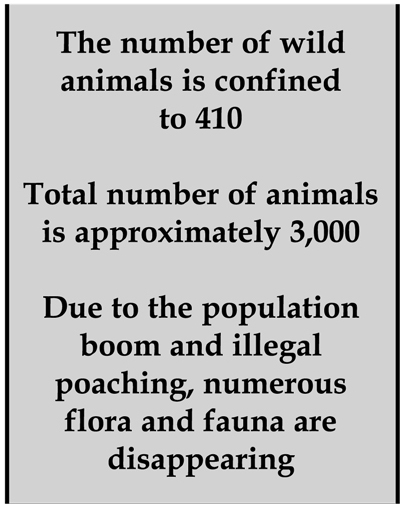
Dulahazara Bangabandhu Safari Park
23 years on since inception, global standard not developed yet
TAHJIBUL ANAM | Tuesday, 7 May 2024

 COX'S BAZAR, May 06: Bangabandhu Sheikh Mujib Safari Park located amidst a beautiful natural setting in Dulahazara Reserve Forest of Chakaria upazila of Cox's Bazar district is the first of its kind in Bangladesh.
COX'S BAZAR, May 06: Bangabandhu Sheikh Mujib Safari Park located amidst a beautiful natural setting in Dulahazara Reserve Forest of Chakaria upazila of Cox's Bazar district is the first of its kind in Bangladesh.
In the 23 years since its inception, the park has had so many infrastructural development and modernisation works, but it has yet to develop a world-class management or operating system.
Established on 300 hectares of land in 2001, the safari park was later extended to 900 hectares.
Government sources said various development activities continued under the Bangabandhu Sheikh Mujib Safari Park Cox's Bazar Development and Expansion Project (phase II) from July 2019 to June 2022 as per the approved master plan to transform the park into a modern and international standard safari park, to be completed by June, 2025.
At present the number of wild animals in the park is confined to only 410.
Among them, there are 123 mammals, 63 reptiles and 224 birds. Besides, the total number of animals in the park is 2,500-3,000.
Domestic and foreign species of animals including elephants, tigers, lions, hippopotamuses, jackals, African zebras, wildebeests, bears, wild boars, hanuman, peacocks, fresh and salt water crocodiles, snakes and wild boars are kept in the park enclosures under strict security.
Chitra, Maya, Sambar and Para species of deer are found throughout the park. There are several hundred different types of birds known and unknown. Huge rare and valuable trees are seen in the park.
The jumping of monkeys on those trees draws attention of the visitors who mostly remain busy capturing the scenes on their cameras.
Once upon a time, the evergreen forest here was full of towering gorjan, Bailam, Telsur, civet, chapalish, champa trees and various creepers.
Numerous species of birds and reptiles were seen here and there. Animals like elephants, tigers, deer, bears and monkeys were seen roaming freely in the forest area.
A deer breeding centre was established in 1982 in an area of 42.5 hectares by the then Cox's Bazar Forest Department.
Due to the increasing pressure of population and illegal poaching, numerous flora and fauna are disappearing from these forests.
The space of the deer breeding centre was increased to preserve the biodiversity of the high and low hillock-rich evergreen forests and to develop the habitat of wild animals through education, research and eco-friendly tourism, along with entertainment and socio-economic conditions.
According to the IUCN-2016 Red List of Bangladesh and other data, there are two species of rhinoceros, two species of bear, wild buffalo, banteng, ramkutta, wolf, green peacock, Badi duck, round bahar snake and many other endangered species in Dulahazara Safari Park.
Known and unknown small species of mammals, birds, reptiles, amphibians, fish and invertebrates and plants were found in large numbers.
Zoo and safari park expert Dr Reza Khan said all world-class safari parks have a standard operating procedure (SOP); this thing does not exist in Dulahazara Safari Park.
"I haven't seen any awareness programme taken here on wildlife and environment conservation. The two safari parks in Bangladesh are just scaled-up versions of low-quality zoos. They do not stand up to the standard of any safari in the world. This safari park needs to be developed into a world-class standard," he continued.
The government should urgently formulate a wildlife policy and establish an autonomous wildlife department, he observed.
Safari parks are very helpful for students and nature researchers to increase their scope of knowledge.
In 23 years of its establishment, Dulahazara Safari Park has become a centre point of entertainment in the region.
Many educational institutions and social organisations arrange their annual picnic here. Therefore, the infrastructural development of the park is being done anew.
Rafiqul Islam Chowdhury, chittagong divisional forest officer of Wildlife Management and Nature Conservation Department, said modernisation work is currently underway in the park under a project whose deadline will end in June 2025.
Due to Covid-19 pandemic, no activities could be implemented in the first two years, so the duration of the project has been extended.
When this project is completed, the image of the park will change. A lot of things will change with that. Much of the park's work has already become visible.